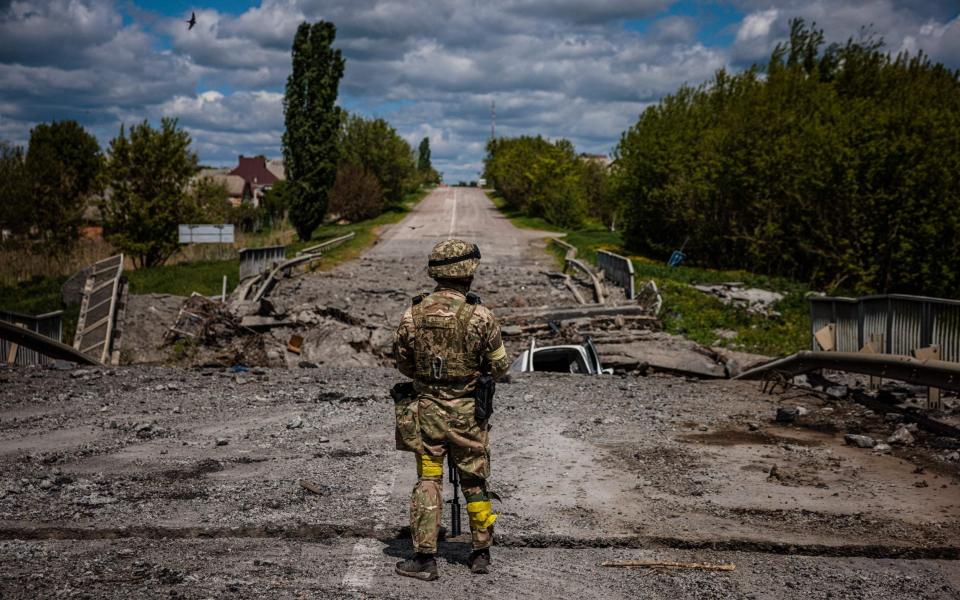Questor: an insurer exposed to Russia and Ukraine? Buy now, when the news looks blackest

Insurance stocks are not the easiest to research and, given the nature of the business, they can be prey to sudden shocks and unexpected events. The Russian invasion of Ukraine is a case in point and the war continues to weigh heavily on the shares of Beazley, the “non-life” insurer. In view of this column’s belief that the best value can be had when the news looks blackest, this may prove to be an interesting opportunity.
The insurer operates in the Lloyd’s of London market and runs syndicates that specialise in areas such as cyber crime and executive risk, marine, political risk, catastrophe and property. The company’s full‑year results for 2021, published in February, were very good as it swung from a loss to a profit of $369m (£301m), some way ahead of analysts’ forecasts, helped by low claims in catastrophe and marine and another excellent performance in cyber crime.
Beazley’s signature Breach Response product, which protects clients from malware, ransomware and other online threats, is a market leader.
In the non-life business, a “combined ratio” of less than 100pc signifies that it is writing profitable business. Beazley recorded a figure of 93pc in 2021, compared with 109pc in 2020.
The chief executive, Adrian Cox, expressed confidence that the FTSE 250 firm could achieve a combined ratio of around 90pc in 2022. As a result, Beazley returned to the dividend list with a final payment of 12.9p a share.
Then came the Russian assault on Kyiv and analysts and investors began to fret about the company’s exposure. A trading statement earlier this month should hopefully help lay those fears to rest. Beazley estimated the potential exposure to Russia and Ukraine at $50m, albeit with possible claims against stranded aircraft on top.
Even then, Cox and his team declared that the targeted combined ratio of around 90pc would still be achievable, which suggests that the aircraft exposure is not substantial.
A lot of bad news may therefore already be in the price, as the shares are down by some 25pc from their pre-pandemic highs. That is also reflected in a forecast price-to-earnings ratio of 11.7 and a yield of 2.9pc.
Apart from its underwriting prowess and experience, Beazley has two other facets that may intrigue potential investors. First, its investment portfolio is a potential beneficiary of rising bond yields, especially for shorter maturity bonds, although unrealised (paper) losses on bond holdings could cloud that picture in the near term.
Second, at a time when investors are worried about inflation, Beazley is proving that it can put up its prices. Premiums on renewal business rose by 17pc, year on year, in the first quarter, to help fuel a 27pc advance in gross premiums written. Beazley could prove to be a bargain.
Questor says: buy
Ticker: BEZ
Share price at close: 468.4p
Update: Lancashire
Our new-found enthusiasm for Beazley must be tempered to some degree by the lack of returns in the wake of our study a year ago of fellow non-life insurer Lancashire, as we are sat on a hefty loss.
But the shares are cheap on the basis of asset value, the company has a fabulous history of dividend payments and improved visibility on Russian exposure could help to (finally) put a floor under the share price.
Storms and large loss events blew 2021 badly off course as the business reported a combined ratio of 107pc and a trading deficit; the Russian invasion only fuelled fears that there would be worse to come. Lancashire has quantified potential losses at $20m-$30m (£16m-£24m), less than many analysts had expected.
Better still, the first quarter showed strong growth in gross premiums and also pricing for business renewal.
A forecast yield of 3pc, assuming an unchanged full-year dividend of $0.15 a share, may not initially catch the eye and the last special dividend dates to 2016. However, income seekers may be intrigued to note that Lancashire has paid total dividends of $12.70 a share since its listing in 2008. That looks good next to the current share price of 405.2p and patience could yet earn its return on the shares.
The worst of the storm may be passing for Lancashire. Hold on.
Questor says: hold
Ticker: LRE
Share price at close: 405.2p
Russ Mould is investment director at AJ Bell, the stockbroker
Read the latest Questor column on telegraph.co.uk every Sunday, Tuesday, Wednesday, Thursday and Friday from 5am.
Read Questor’s rules of investment before you follow our tips.

 Yahoo Finance
Yahoo Finance